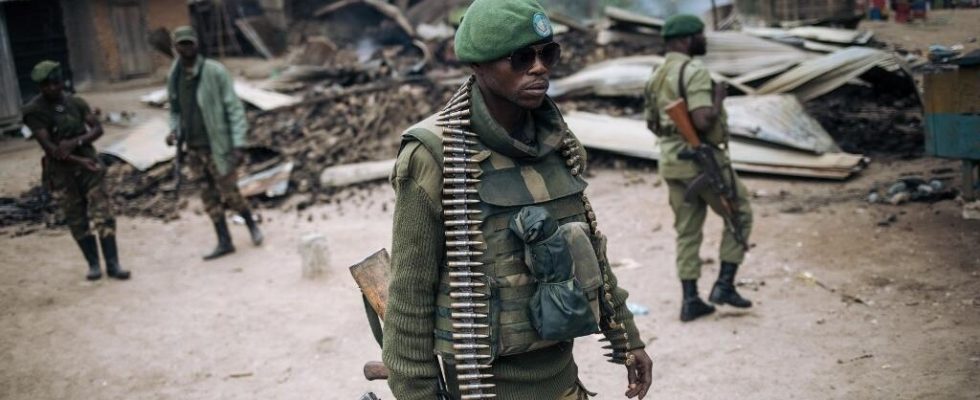The Congolese army takes stock of a month of military operations in the territory of Beni, in eastern DRC. After the massacre attributed to the armed group ADF in a high school in Uganda, on the border between the two countries, the forces of the FARDC-UPDF coalition intensified their actions to put an end to the threat of the Islamist group, particularly in the Mwalika valley. The Congolese army announces that 16 “terrorists” have been killed, including several leaders.
2 mins
This area of Mwalika, located more than twenty kilometers east of Beni, is a historic stronghold of the ADF. ” This is where they settled when they arrived in ground floor “, confirms a researcher specializing in the Islamist group. ” For a long time they did not carry out actions against civilians there, but now it is one of the areas most affected by violence “, details our source. In June, the Beni area is actually the one that recorded most victims of violence because of the armed groups in front of the Djugu territory in Ituri, where Codeco is rampant.
After the murderous attack on a high school on the Ugandan side, in Mpondwe, in mid-June, the armies of the two countries very quickly accused the Mwalika cell of having perpetrated this attack which cost the lives of more than 40 people. They then intensified operations against the armed group: bombardments, searches and searches of the valley in order to neutralize the attackers and to try to find, without success, the kidnapped high school students.
A relative of the number two of the ADF among the neutralized leaders
After a month, as an assessment, the joint command announces that it has killed several ADF leaders. They are presented as heads of cells on Congolese soil. And among them, we find in particular Kabangakane, suspected by the military of being the one in charge of the operations of the group of Amigo, the current number 2 of the Islamist movement.
“ We’re not crying victory yet », nuance a Congolese army officer who adds that the war continues. “ There are indeed several risks, says a security source. First of all, that of reprisals against civilians, and this has already been seen in the past. But we can also fear to see the movement sink further to the West, such as the territory of Mambasa or the wildlife reserve at Okapis. They could strengthen the cells already present in these areas and it will be even more difficult to overcome them. »
